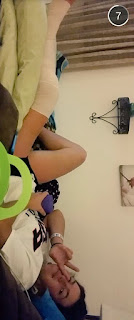Week 4

I never really viewed medicine and technology as art. This weeks lesson I find really interesting because I have had medical issues last year involving a knee injury. I had torn my ACL (Anterior Cruciate Ligament) and meniscus due to sports. I've had to get three MRI's because they could not tell if the ACL was torn. After seeing a doctor back at home and here at UCLA they all agreed to repair the meniscus then ACL, but due to how bad I tore my meniscus they thought it was in best interest to stage this surgery. I got my meniscus repaired at home during the summer of 2015 then when I got here to UCLA during summer school they fixed my ACL. During my rehab, I pushed myself too hard and ended up re-tearing my meniscus involving a third surgery. Medicine, tools, and technology are considered art according to Vesna's Lecture Pt.2. MRIs and X-Rays are is used to show organs and tissues within the body. Silvia Casini states in her article, “MRI has a ‘look’ in the same wa...


